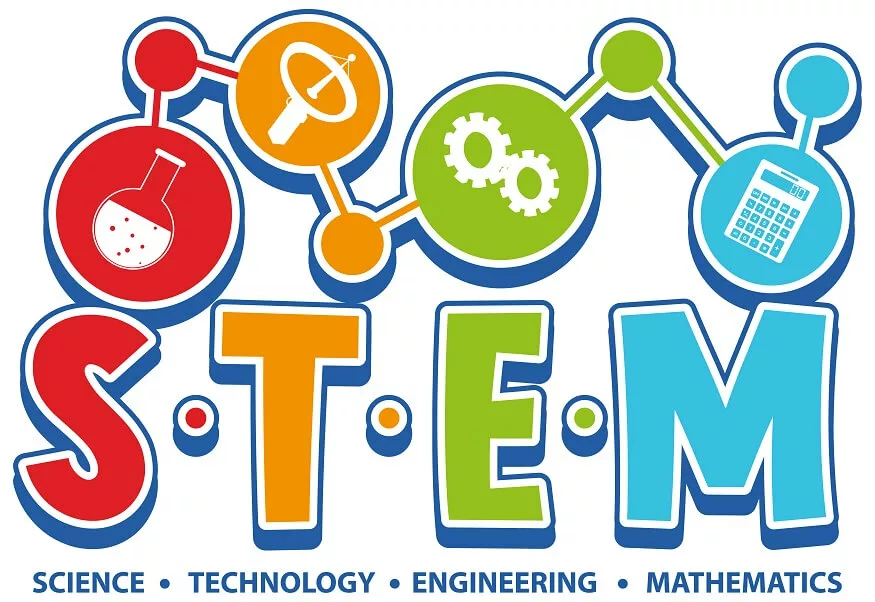STEM (Science, Technology, Engineering, and Mathematics) activities are crucial in early education. They encourage curiosity, critical thinking, and a love for learning in young minds. Particularly in kindergarten, STEM activities are designed to be both fun and educational, laying a solid foundation for future learning.
What is the meaning of STEM learning?
STEM lessons refer to educational activities and curriculum that focus on four specific disciplines: Science, Technology, Engineering, and Mathematics.Here’s a closer look at each component:
- Science: This involves learning about the natural world, including subjects like biology, chemistry, physics, and environmental science. In STEM lessons, science is often explored through experiments and hands-on activities, encouraging students to question, hypothesise, and explore.
- Technology: This aspect focuses on using and understanding digital tools and systems. In STEM education, technology is often integrated through the use of computers, software, and other digital tools to solve problems or create new products.
- Engineering: This is the application of science and maths to solve problems. STEM lessons in engineering might involve designing and building structures, machines, or systems. These activities often encourage creative thinking and problem-solving skills.
- Mathematics: In STEM, mathematics is applied to real-world situations, reinforcing its importance and practicality. Lessons might involve using maths to analyse data, solve problems, or model scenarios.
Also Read: What is STEM Education? Importance of STEM Education
STEM Lessons For Learners
STEM lessons are becoming increasingly important in education systems globally, as they prepare students for future careers and challenges in a rapidly evolving technological world. Let’s explore ten exciting STEM lessons that your child will absolutely love.
1. Exploring the Wonders of Nature
One of the simplest yet most effective STEM activities is exploring nature. Children learn about different plants, animals, and ecosystems, understanding the diversity and beauty of the natural world. This hands-on experience fosters a deep respect for the environment and introduces basic biological concepts.
2. Building Simple Structures
Using blocks or other building materials, children learn the basics of engineering by constructing simple structures. This activity enhances spatial awareness, problem-solving skills, and creativity. It also introduces basic physics concepts like balance and stability.
3. Fun with Shadows and Light
Playing with shadows is a great way to teach children about light and optics. This can include making shadow puppets or observing how the position of the sun affects the length and direction of shadows. These activities introduce basic principles of light and are perfect for sparking curiosity.
4. Simple Chemistry Experiments
Simple, safe chemistry experiments, like mixing baking soda and vinegar, show children the exciting world of chemical reactions. These activities are not only fun but also teach the basics of chemical interactions in a controlled and safe environment.
5. Counting and Sorting Activities
Counting and sorting activities are fundamental in kindergarten. They help children understand numbers, patterns, and categorisation. This forms the foundation for more complex mathematical concepts they will encounter later in their education.
6. Introduction to Coding
Basic coding activities, often facilitated through child-friendly apps or games, introduce the concept of programming. These activities enhance logical thinking and problem-solving skills, crucial components of the STEM curriculum.
7. Weather Watching and Recording
Keeping a weather diary helps children learn about different types of weather and seasons. They observe, record, and discuss their findings, developing their observational and analytical skills.
8. Planting and Growing
Planting seeds and watching them grow is a wonderful way to teach children about plant biology and the life cycle. This hands-on experience is not only educational but also incredibly rewarding as children see the results of their care and efforts.
9. Exploring Magnets
Experiments with magnets are fascinating for young children. They learn about magnetic forces, materials that are magnetic, and the basic principles of attraction and repulsion. This simple activity introduces physics in an accessible way.
10. Basic Astronomy
Introducing children to astronomy through stargazing or using simple telescopes can ignite a lifelong interest in space science. This helps them understand our place in the universe and introduces basic concepts of astronomy.
Also Read: Adapting to New CBSE Assessment Patterns and Grading System
How do you introduce STEMS to kindergarten?
Here are some effective strategies:
- Use Hands-On Activities: At this age, children learn best through hands-on experiences. Simple experiments, building blocks, and interactive games can teach basic concepts of science and engineering. For example, building a tower with blocks can introduce basic engineering principles.
- Incorporate Storytelling: Children love stories. Integrating STEM concepts into stories can make them more relatable and understandable. For example, a story about a journey to the moon can introduce basic astronomy.
- Utilise Everyday Objects and Experiences: Teaching STEM doesn’t always require special equipment. Everyday experiences, like cooking, can be used to teach measurements (mathematics) or changes of states (science).
- Integrate Technology Mindfully: Use technology in a way that enhances learning. This can be through educational apps, videos, or simple computer games that teach coding concepts or problem-solving.
- Make it Fun and Playful: Turn learning into a game. For example, use puzzles to teach spatial awareness and problem-solving, which are key in engineering and maths.
- Encourage Exploration and Experimentation: Let children explore materials, build things, or mix safe substances. It’s okay if things don’t always work out. The focus should be on the process, not just the outcome.
- Foster Creativity and Imagination: Encourage children to think creatively. This could be through building unique structures with LEGO, drawing, or imagining new inventions.
- Engage in Group Activities: STEM learning can be social. Activities that require teamwork can teach children to collaborate, share ideas, and respect different perspectives.
- Keep it Simple and Age-Appropriate: Concepts should be broken down into simple ideas that are age-appropriate. Avoid complex jargon and focus on the basics.
- Connect with Nature: Use outdoor environments to teach about plants, animals, weather, and ecosystems. Nature walks, gardening, or simple observations of the sky can be very educational.
- Parent and Teacher Involvement: Educators and parents should be involved and enthusiastic. Their interest and involvement can significantly motivate children.
Also Read: Exploring the ICSE Grading System and Assessment Methods
STEM activities for kindergarten are not just about learning scientific facts; they’re about nurturing curiosity, creativity, and a love for learning. These ten STEM lessons offer a variety of fun and educational experiences that will inspire your child and lay the groundwork for a lifelong interest in STEM fields.
EuroSchool integrates these activities into your child’s learning and gives them a head start in understanding the world around them in a thoughtful and engaging way.










